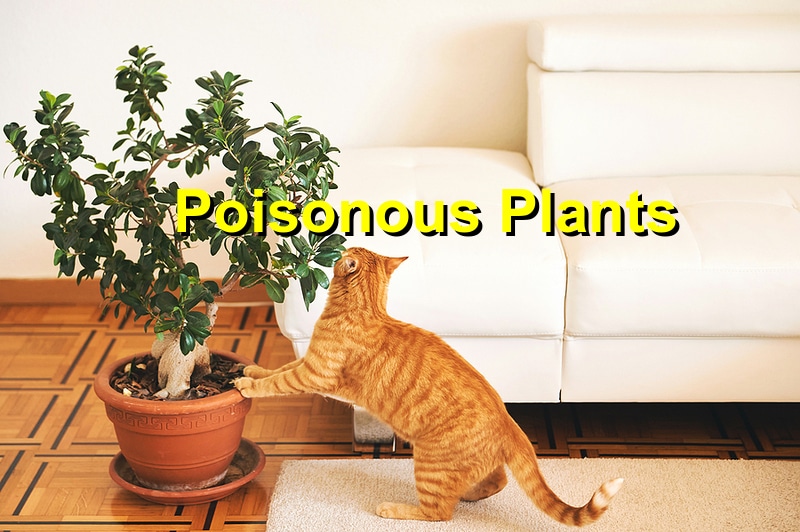Cats love to chew shrubs and plants. And since they enjoy climbing and scaling bushes it can be extremely difficult to keep poisonous plants out of their reach. So if you are a plant lover and wish to keep live plants in your apartment, home compound or house, you have to be able to accurately identify toxic flowers and plants that may potentially harm your kitty’s wellbeing. Here’s a quick preview of some of the most poisonous flowers and plants to cats.
Parts of Common Plants That Are Poisonous to a Cat
Most of the time, if a plant is toxic or poisonous to your cat, then it is only safe to assume that all plant parts are not safe to have around your kitty. In reality, though, it’s only natural for some of the parts of the plant to have a higher concentration of toxicity than others. Having said that, toxic doses often vary from one plant to the other. In some cases, it can be so bad that just ingesting a little amount of the plant can have devastating and health-changing impacts.
Having said that, common plants that are poisonous and largely toxic to cats include;
· Autumn Crocus
· English Ivy
· Oleander
· Pothos, Devil’s Ivy
· Spanish Thyme
· Lily of the Valley
· Chrysanthemum, Daisy, Mum
· Azaleas and Rhododendrons
· Sago Palm
· Dieffenbachia
Symptoms of Cat Toxicity
Considering that a majority of these plants are basically irritants, the vast majority of the tell-tale symptoms arising from exposure to the above-listed plants will border on inflammation and irritation. This includes the likes of swelling, redness, itchiness on the skin, eyes and mouth. And if, by any chance, the cat swallowed the offending plant, the gastrointestinal tract such as the intestines, stomach and oesophagus may become irritated to the point of inducing diarrhoea, vomiting, hiccups or retching. Speaking of which, it is also not uncommon to witness drooling and swallowing difficulty in such cases.
What to do in the Event your Cat is Poisoned
Get rid of any potentially poisonous plant material as soon as you suspect that your cat has been poisoned. Make sure you have removed the plant material from the kitty’s skin, hair and mouth even before rushing them to the veterinary office to reduce the chances of the cat being poisoned again.
References: ASPCA , BeChewy, Catprotection





